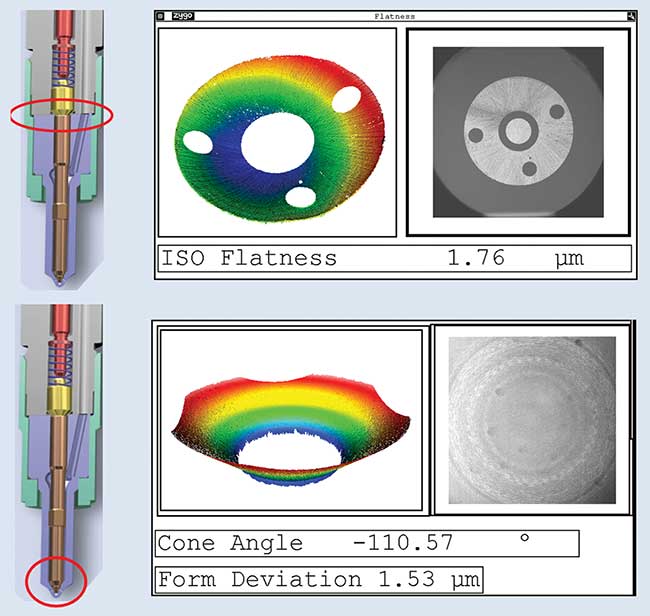Superresolution techniques break the diffraction limit; laser speckle analysis allows for better metrology of the tiniest features.
 At one time, the diffraction limit, half the wavelength of light, acted as a cutoff to optical measurement. That’s no longer the case. Superresolution techniques now allow optical metrology well below that point in the XY direction, while interferometry and other approaches produce precise optical measurement in the Z, or vertical, direction.
Other innovations involve laser speckle analysis and the combination of different technologies, enabling better metrology on ever smaller features. On the horizon are techniques that could enable wide-field superresolution.
Optical measurement is typically employed for two reasons, according to Oscar Rodriguez, manager of application specialists for industry and material science in Europe for Leica Microsystems GmbH. The Wetzlar, Germany-based company makes subdiffraction limit resolution systems based upon selective deactivation of fluorophores in biological samples.
“You need to use optical technologies because of the [feature] size. We’re entering into the microscopic world. Or you’re using optical technologies because they’re noncontact and fast,” Rodriguez said.
With standard resolution techniques, optical measurements of a few hundreds of nanometers are achievable in X and Y. In Z, technologies based on interferometric, confocal and focus variation techniques enable much more precise metrology.
Interferometry exploits the interference between light beams, which start as one, are split and then brought back together after traveling down different paths. Interferometric systems can detect pathway differences in nanometers.
At one time, the diffraction limit, half the wavelength of light, acted as a cutoff to optical measurement. That’s no longer the case. Superresolution techniques now allow optical metrology well below that point in the XY direction, while interferometry and other approaches produce precise optical measurement in the Z, or vertical, direction.
Other innovations involve laser speckle analysis and the combination of different technologies, enabling better metrology on ever smaller features. On the horizon are techniques that could enable wide-field superresolution.
Optical measurement is typically employed for two reasons, according to Oscar Rodriguez, manager of application specialists for industry and material science in Europe for Leica Microsystems GmbH. The Wetzlar, Germany-based company makes subdiffraction limit resolution systems based upon selective deactivation of fluorophores in biological samples.
“You need to use optical technologies because of the [feature] size. We’re entering into the microscopic world. Or you’re using optical technologies because they’re noncontact and fast,” Rodriguez said.
With standard resolution techniques, optical measurements of a few hundreds of nanometers are achievable in X and Y. In Z, technologies based on interferometric, confocal and focus variation techniques enable much more precise metrology.
Interferometry exploits the interference between light beams, which start as one, are split and then brought back together after traveling down different paths. Interferometric systems can detect pathway differences in nanometers.
Member Exclusive: To read the complete article, please Login or Register